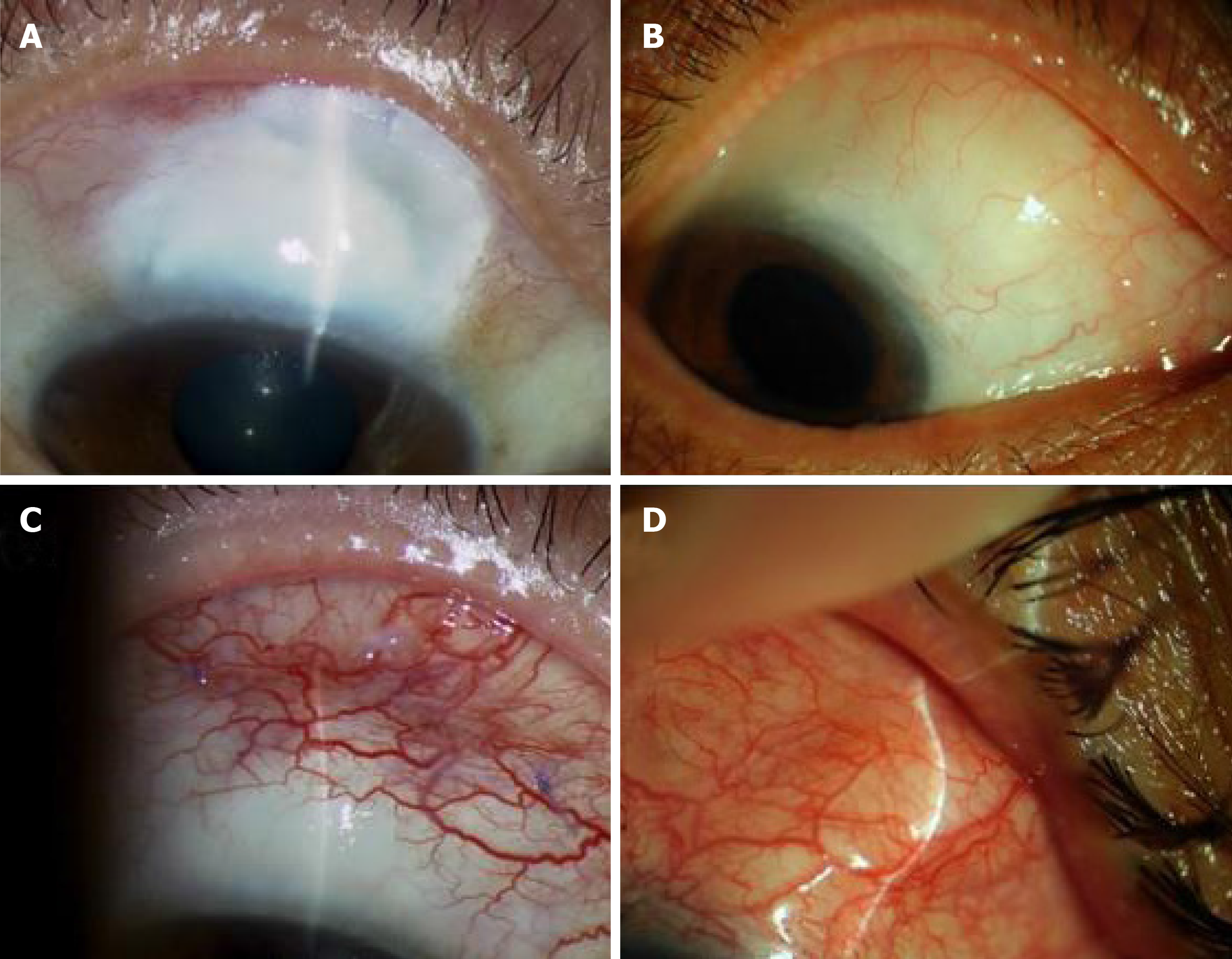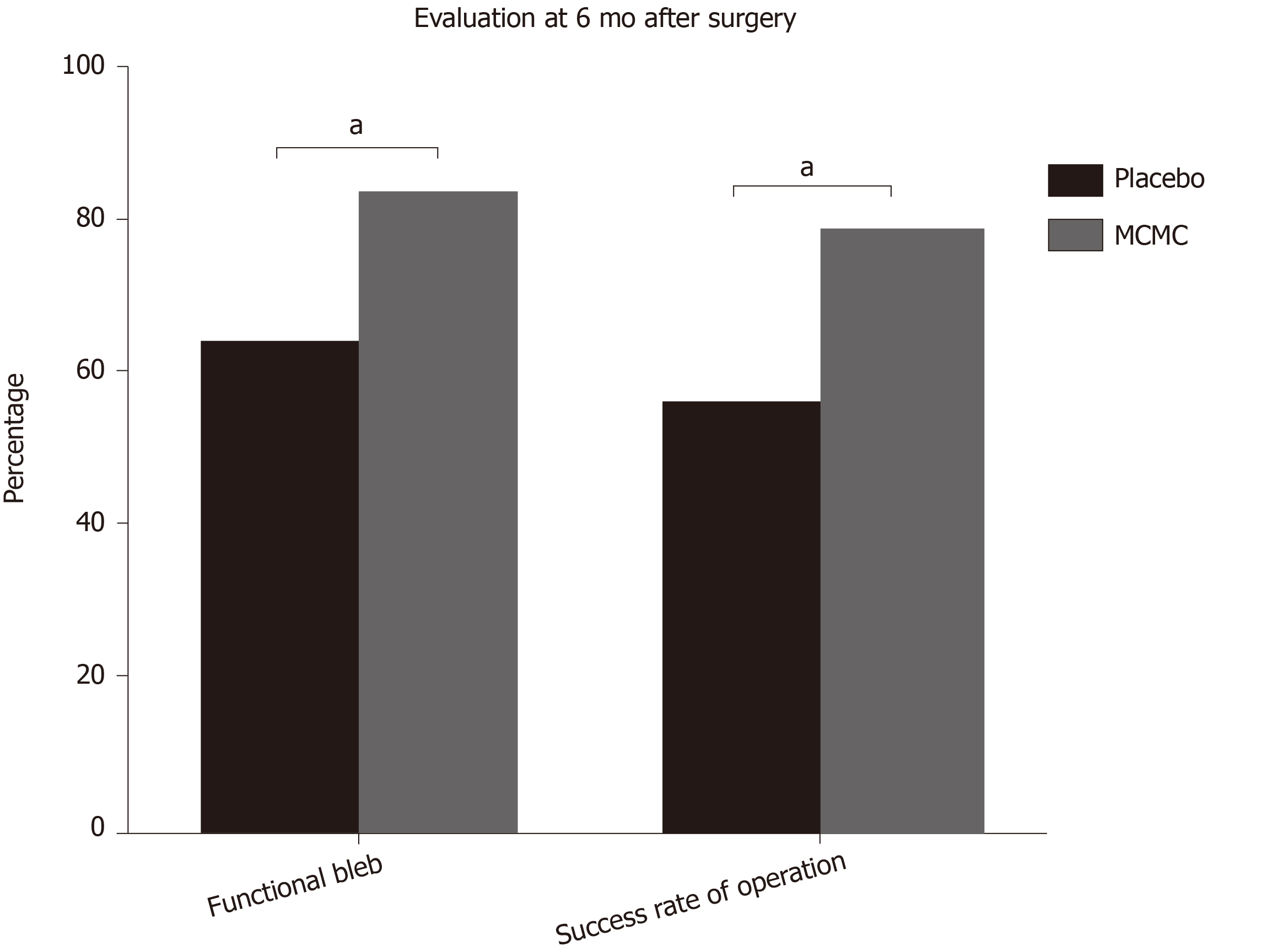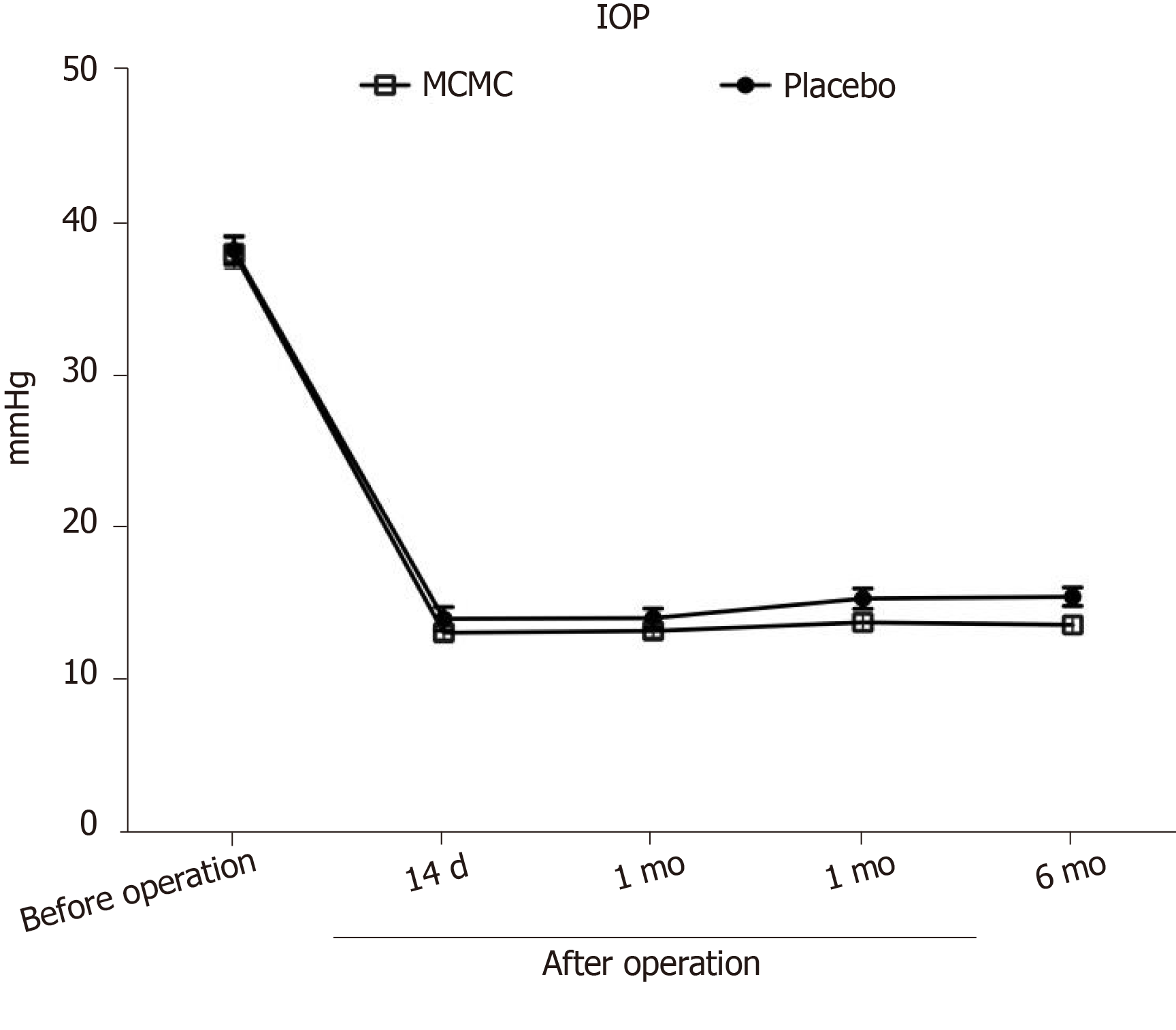Copyright
©The Author(s) 2019.
World J Clin Cases. Nov 6, 2019; 7(21): 3436-3445
Published online Nov 6, 2019. doi: 10.12998/wjcc.v7.i21.3436
Published online Nov 6, 2019. doi: 10.12998/wjcc.v7.i21.3436
Figure 1 Four types of filtering bleb were diagnosed.
A: Type I (small cystic type): Thin capsule wall, no vessels with tiny cystic; B: Type II (flat diffuse type): Thicker capsule wall, flat, diffuse and pale filtering bleb; C: Type III (scar type): No filtering bleb or conjunctiva congestion, rich vessels and scarring on the filtering bleb; D: Type IV (package type): Cystic hyperplasias, limitations of uplift filtering bleb.
Figure 2 Histogram shows percentage comparisons of the functional bleb and success rate of operation after 6 mo.
Comparison between Modified Cortex Mori Capsules and placebo group were significantly different (aP < 0.05). MCMC: Modified Cortex Mori Capsules.
Figure 3 The rate of functional filtering bleb.
MCMC: Modified cortex mori capsules.
Figure 4 Dynamic changes of intraocular pressure during pre-operation and postoperation at different time points.
The results showed that the intraocular pressure level is similar pre-operation between the Modified Cortex Mori Capsules group and the placebo group. During the post-operative period, the IOP levels in the Modified Cortex Mori Capsules group were lower than the placebo but not significantly (P > 0.05). IOP: Intraocular pressure; MCMC: Modified Cortex Mori Capsules.
- Citation: Yu J, Qiu LX, Qing GP, Zhao BW, Wang H. Modified Cortex Mori Capsules improving the successful rate of functional filtering blebs after reclinical glaucoma filtering surgery. World J Clin Cases 2019; 7(21): 3436-3445
- URL: https://www.wjgnet.com/2307-8960/full/v7/i21/3436.htm
- DOI: https://dx.doi.org/10.12998/wjcc.v7.i21.3436












